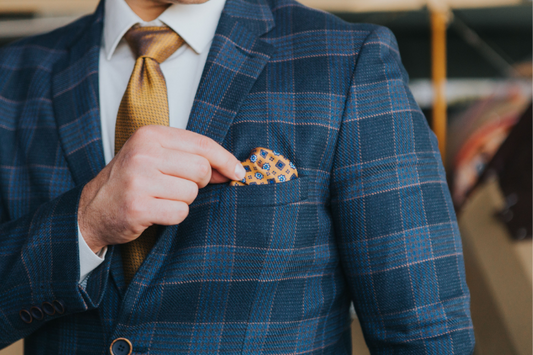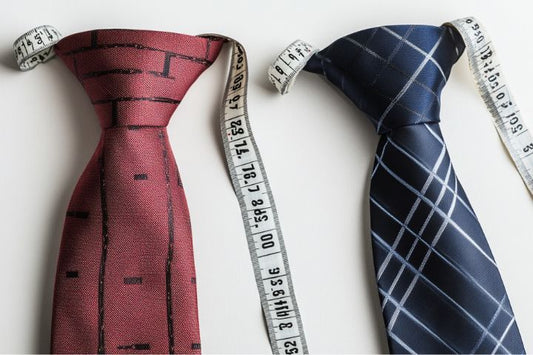Cufflinks are a stylish accessory that serves both functional and aesthetic purposes in men's fashion. They are used to secure the cuffs of a shirt that has holes on both sides instead of buttons, creating a sophisticated look. As a symbol of elegance and refinement, cufflinks have been a staple in the wardrobe of the well-dressed individual for centuries. They come in various designs, materials, and mechanisms, catering to a wide range of styles and occasions. Whether one opts for a classic pair of silk knots or diamond-encrusted links, cufflinks can elevate the wearer's attire from standard to striking.
Understanding how cufflinks work is straightforward. Essentially, cufflinks consist of a decorative face, a post that enters through the aligned holes of the shirt cuff, and a toggle that secures the cufflink in place. To attach them, one simply lines up the holes on both sides of the shirt cuff, threads the post through, and then flips the toggle or secures the back to ensure the cufflink is fastened. This method not only keeps the cuff neatly closed but also adds a touch of personality to the ensemble.
In terms of fashion, cufflinks are versatile accessories that can be matched with various styles, from the most formal black-tie events to more casual office settings. They offer a way for individuals to express their style and attention to detail. Selecting the right pair of cufflinks can depend greatly on the occasion, personal taste, and the overall look one is trying to achieve. Whether one's style is understated or bold, cufflinks can be an integral part of one's sartorial expression.
Cufflink Types and Their Mechanisms
Cufflinks are designed to secure the cuffs of a shirt and can vary in design and closing mechanism, offering both aesthetic appeal and functional use.

Fixed Post and Toggle Closure
Fixed post cufflinks feature a solid post with a decorative front face. The toggle, a bar attached at the back of the front face, swings ninety degrees to lock into place, securing the cufflink.
Swivel Bar and Whale Back
Swivel bar cufflinks are distinguished by a bar mechanism that swivels parallel to the post to pass through the cuff's holes, then swivels back to secure them in place. Whale back cufflinks, often known for their ease of use, consist of a flat head, a straight post, and a "whale tail" that flips flat against the post to lock.
Chain Link and Knot
Chain link cufflinks possess two decorative faces connected by a chain, providing a more traditional and flexible fit. Knot cufflinks are a variation of the chain style, where a fabric or metal "knot" serves as each face, adding a textured and casual look.
Hinged and Bullet Back
Hinged cufflinks, also known as locking dual-action cufflinks, utilise a hinge mechanism that pivots to close and lock the cufflink. Bullet back cufflinks employ a small cylindrical capsule fixed to a narrow post, secured by flipping the capsule through a 90-degree turn.

Choosing the Right Cufflinks for the Occasion
Choosing the appropriate cufflinks enhances one's attire, reflecting personal style and the demands of the social function. It's essential to select cufflinks that complement both the event and the ensemble.
Determining Suitability
When selecting cufflinks, individuals must consider the formality of the event. For formal occasions such as weddings or black-tie events, one should opt for elegant cufflinks—typically those made from precious metals or featuring tasteful designs. Conversely, a casual occasion permits more freedom, allowing for creative and fun cufflink styles that showcase personality and flair.
- Formalwear: Silver, gold, or mother-of-pearl cufflinks are classic choices.
- Business settings: Simplistic designs in conservative colours are recommended.
- Casual occasions: Novelty or themed cufflinks are acceptable; they should, however, still coordinate with the shirt and overall attire.
Cufflink Etiquette
Understanding cufflink etiquette is paramount for making a positive impression. For business functions, cufflinks should be subtle, complementing one's suit without drawing excessive attention. A first date or a less conventional function might permit slightly more adventurous styles, yet they should remain tasteful and in keeping with the rest of one's attire. Whichever style one selects, it should resonate with the individual's personal style while remaining versatile enough to suit various sartorial scenarios.
Here are specific guidelines based on the occasion:
- Formal occasions: Stick to classic and understated designs.
- Business environments: Choose cufflinks that match the colour of your watch or belt buckle.
- Casual settings: Personal expression is more accepted; however, ensure it doesn't clash with the ensemble.

Cufflink Size and Proportion
In selecting cufflinks, one must consider the size and proportion as they play a significant role in both the fit on the shirt and the overall style they convey.
Matching Cufflink Size to Wrist Size
When choosing cufflinks, one should factor in the wrist size to ensure a proper fit. Proportionality is key; cufflinks should neither be too large nor too small relative to the wrist. The cufflink size must also correspond to the shirt's buttonhole, allowing a snug fit without strain. Larger wrists may accommodate heavier ball cufflinks or ones with a large head, while smaller wrists may look more appropriate with subtler cufflinks.
The Impact of Cufflink Size on Style
The size of the cufflink greatly influences the style and formality of the outfit. For formal occasions, smaller, more understated cufflinks are often preferable, presenting an elegant and refined appearance. Conversely, larger and more ornate cufflinks may suit business settings or social events, where they can serve as a statement piece. It is crucial that the cufflink size is proportional to the cuff, as disproportionate cufflinks can distract and undermine the cohesion of the attire.





